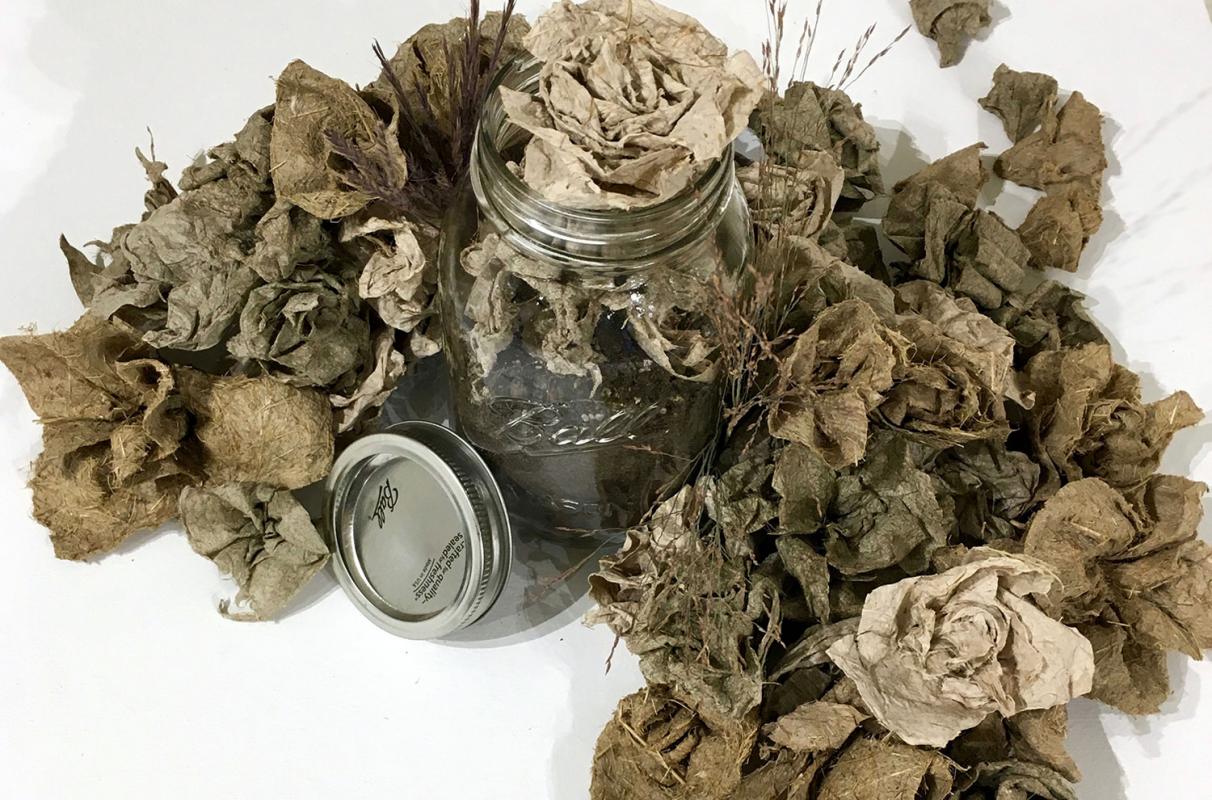
Noree Maloney ’19 – Paper Flowers, Native Grasses: The paper flowers were made to highlight biodiversity and its natural beauty. Inside each flower is a Blue Aster seed, which is a native Indiana wildflower. The grasses used to make the paper were Andropogon gerardi, or Big Blue Stem and Panicum virgatum, or Switchgrass, both native grasses. These grasses help restore the water table and support the ecosystem. The flowers are meant to be planted so that as the paper is naturally composted, Blue Asters will begin to grow. Through their presence, the goal is to increase the opportunity for natural, native habitat occurrence and to raise awareness about the biodiversity that is native to Indiana.
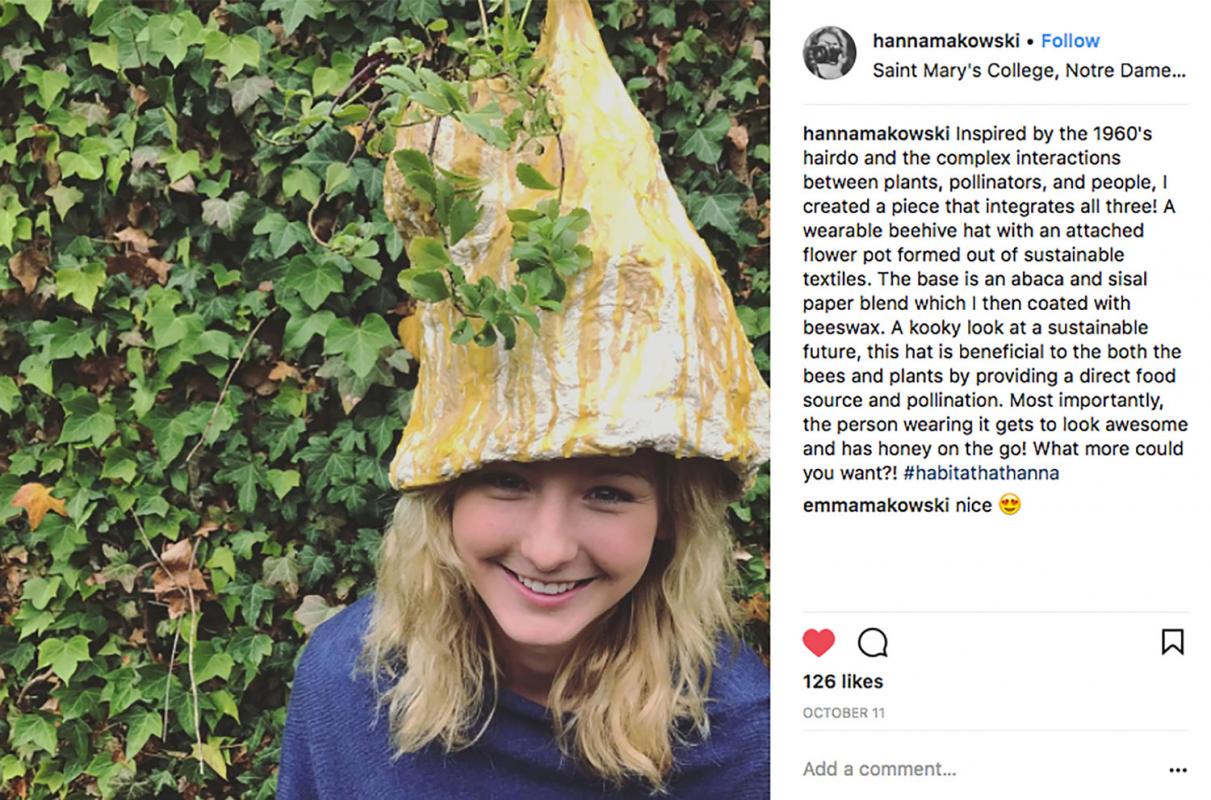
Hanna Makowski ’18 – Habitat Hat: Inspired by the 1960's hairdo and the complex interactions between plants, pollinators, and people, I created a piece that integrates all three! A wearable beehive hat with an attached flower pot formed out of sustainable textiles. The base is an abaca and sisal paper blend which I then coated with beeswax. A kooky look at a sustainable future, this hat is beneficial to both the bees and plants by providing a direct food source and pollination. Most importantly, the person wearing it gets to look awesome and has honey on the go! What more could you want?!
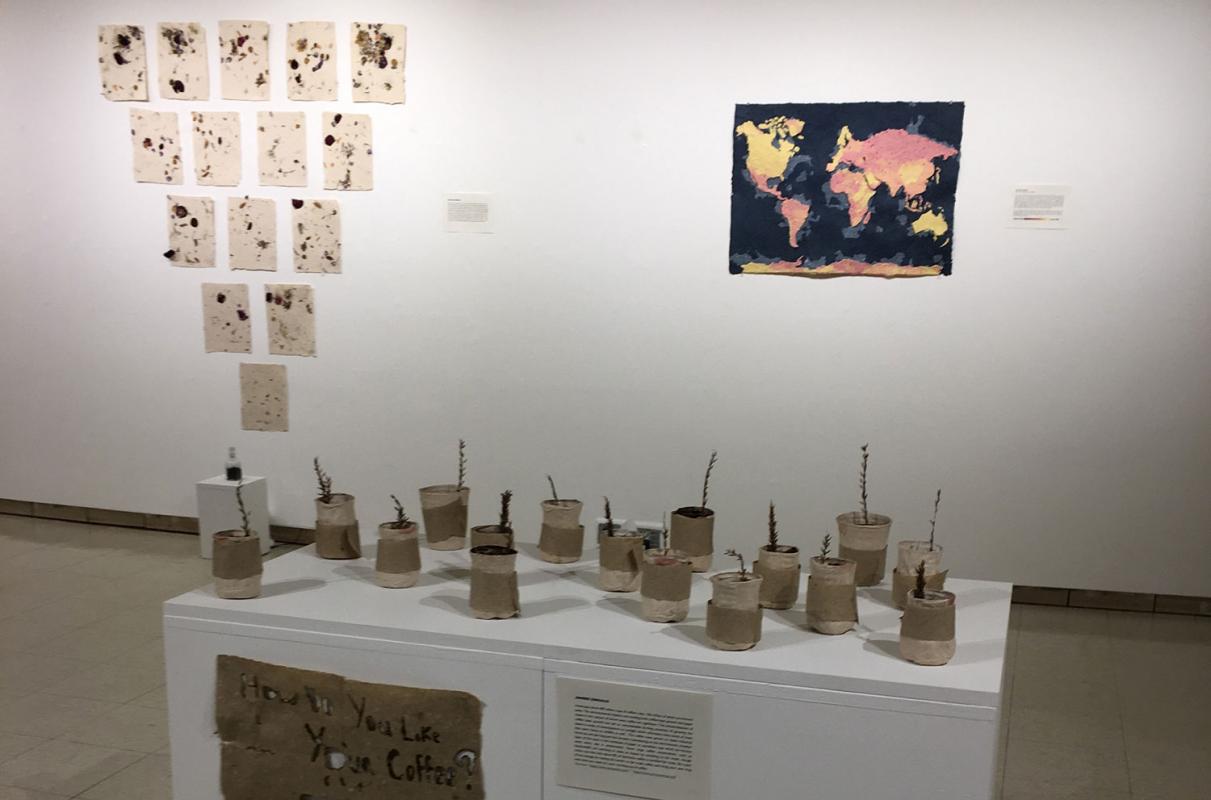
Anibee Zingalis ’20 – Coffee: Americans drink 400 million cups of coffee a day, 158 million of which are thrown away. The environmental impacts surrounding both coffee bean growth and paper waste in this culture of throw away coffee are significant. The industrialization of coffee bean growth has led to unsustainable farming practices of growing the beans in areas of overexposure to sunlight which eliminates many acres of trees that were home to wildlife as well. The coffee trees grown on these industrial farms do not last long and the harvest is devastating on the environment. Another layer of this issue is the multitude of paper or styrofoam cups which are thrown away every day is phenomenal. Some large coffee corporations, such as Starbucks®, are working to make an impact by switching to fair trade, though critics cite that only about 8% of Starbucks coffee is certified fair trade. Be a part of the change by making the switch to fair trade coffee and bring your own mug next time you reach for your morning cup of coffee.
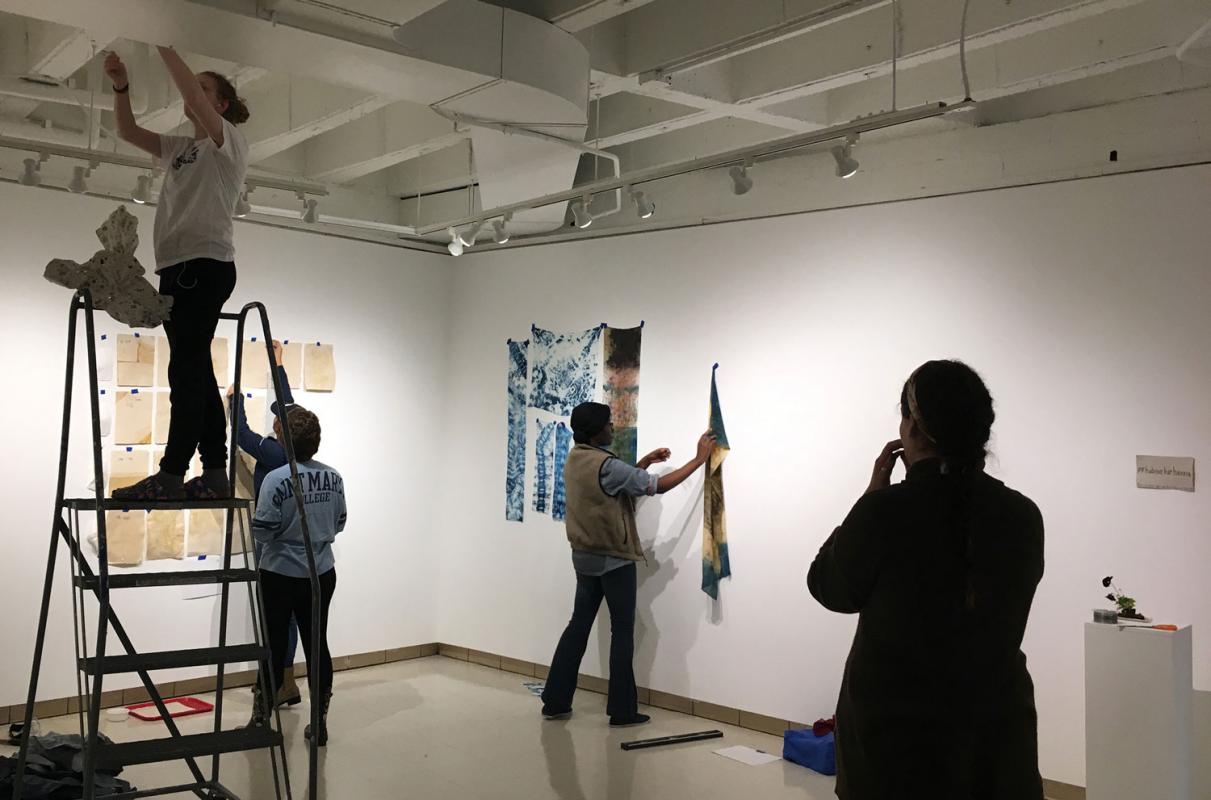
Students in Sustainable Textiles course install their work in the art gallery
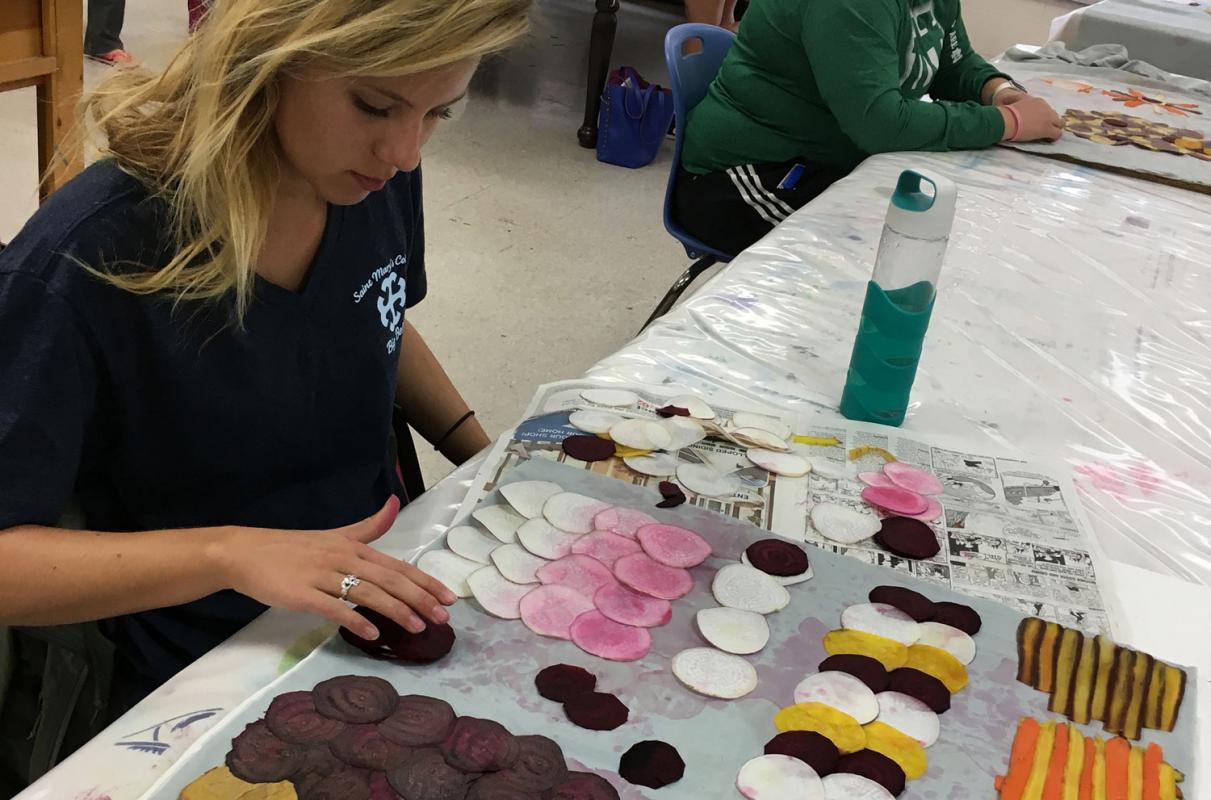
Maura Barry ’18 makes vegetable papyrus in workshop with visiting artist, Julia Goodman
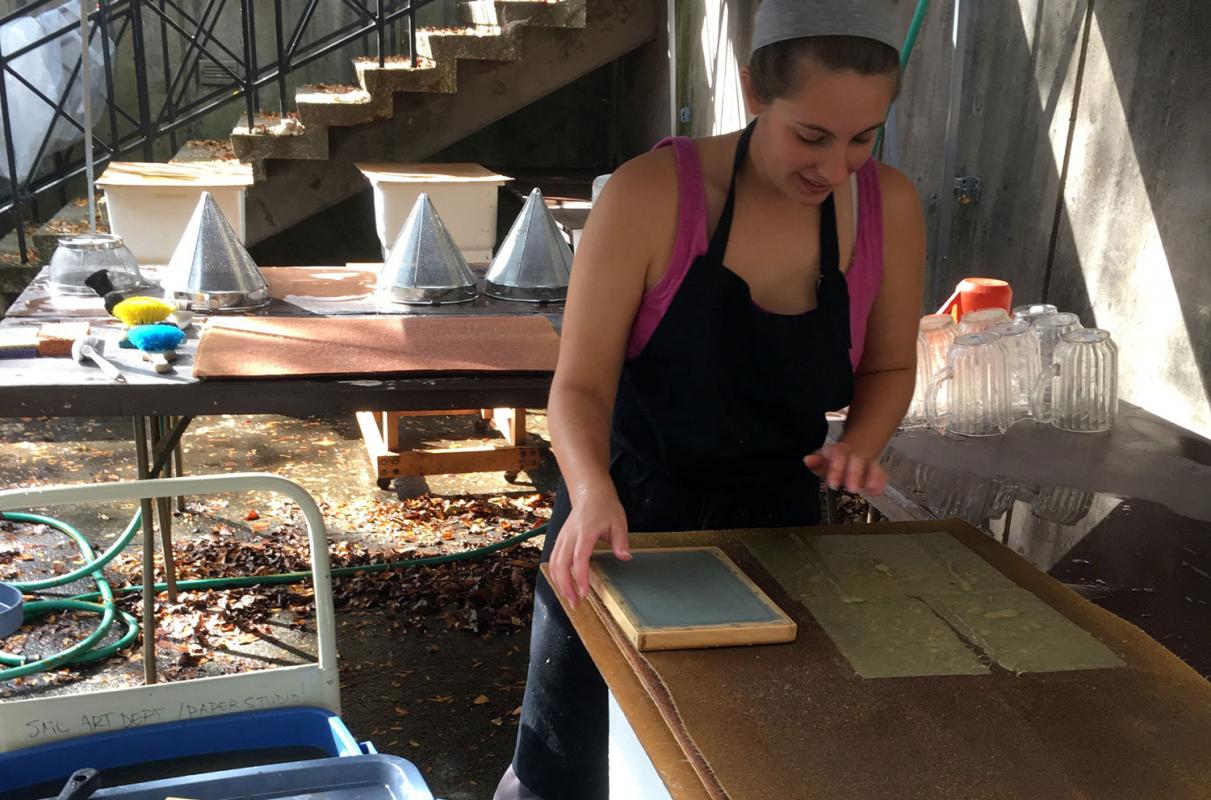
Anibee Zingalis ’20 making paper from cornstalks she harvested, cut, cooked and beat into stuff (pulp).
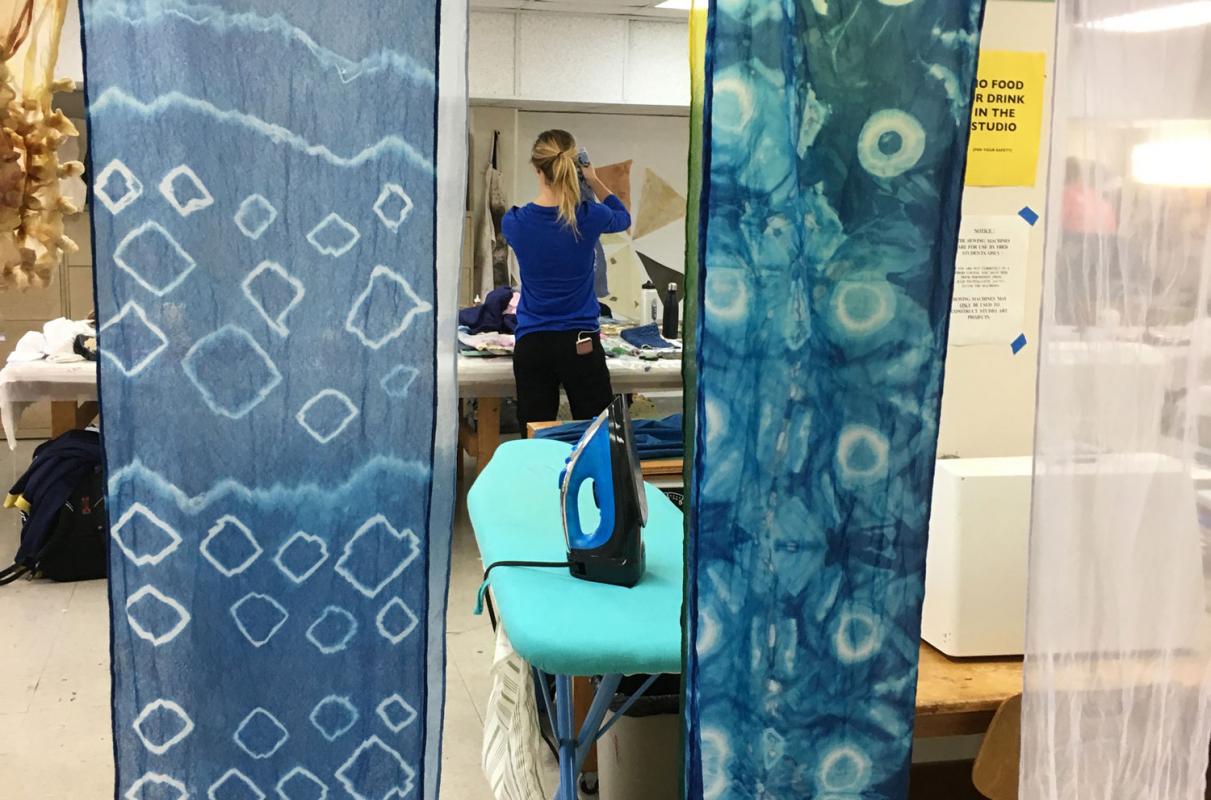
Students in ART 236 working with eco-dyeing methods.
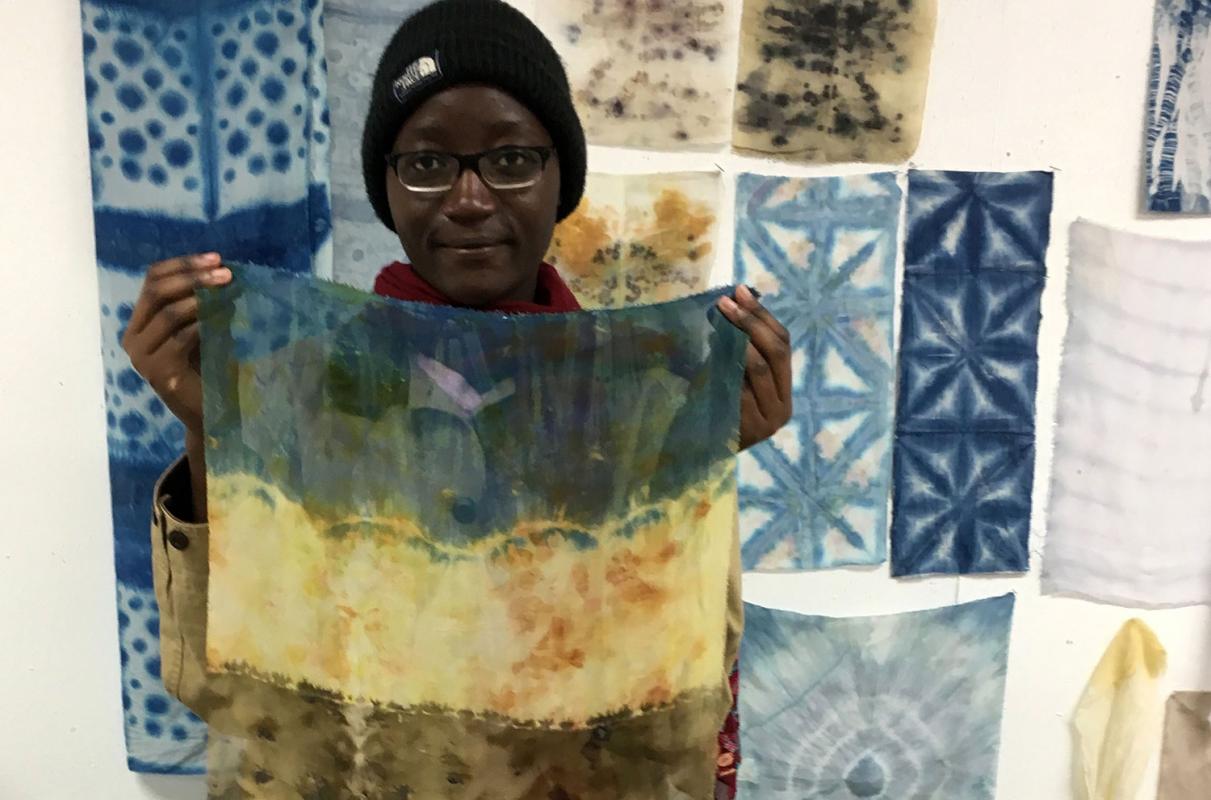
Chim-Chim Daniel ’18 with eco-dyed fabrics made using onion skins, red cabbage, black walnuts, pokeberry, turmeric, indigo and iron mordant.
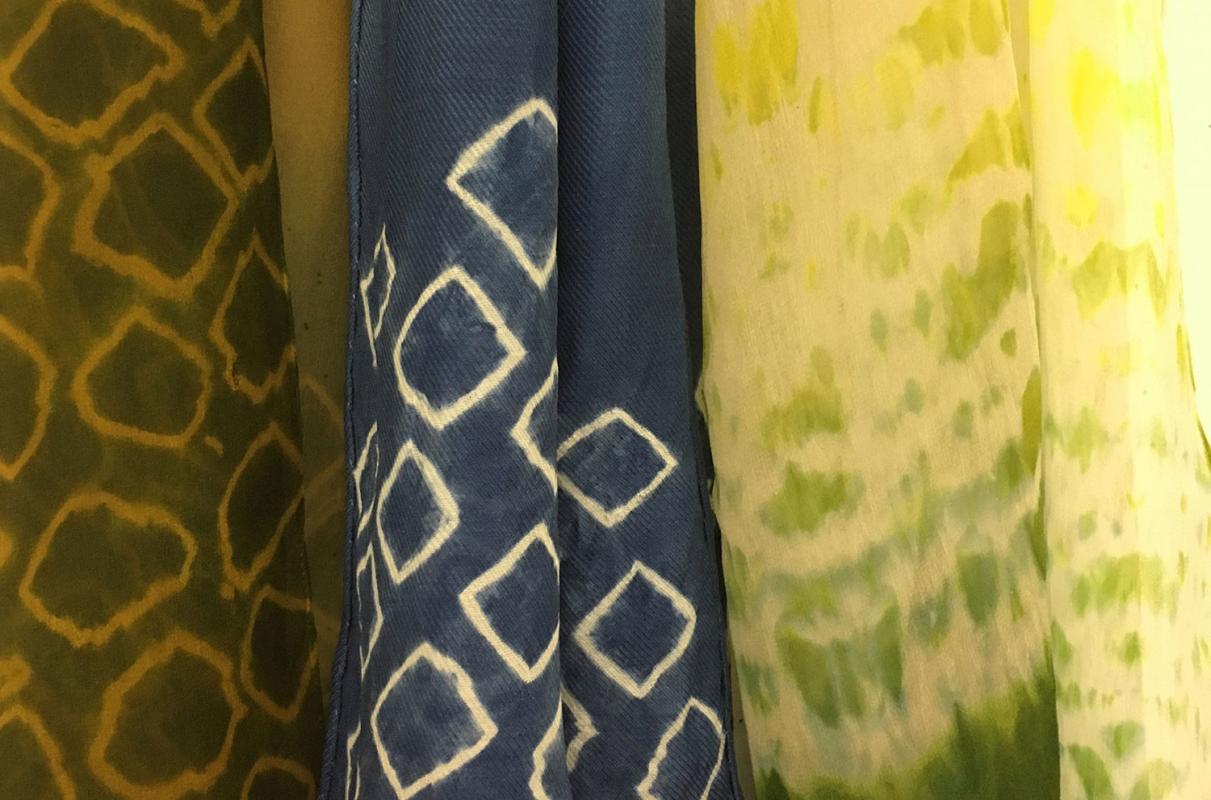
Eco-dye samples: natural dyes including turmeric, walnut, indigo and iron mordant.
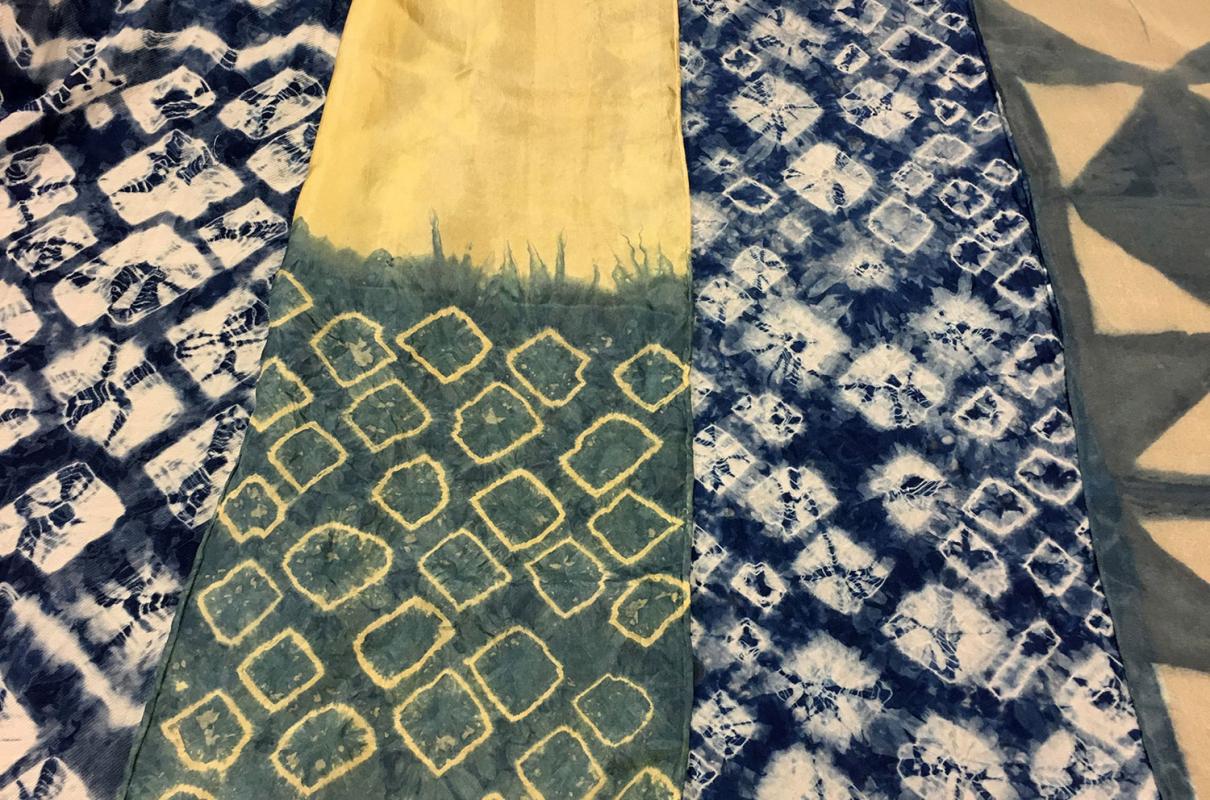
Eco-dye samples: natural dyes including turmeric, walnut, and indigo.
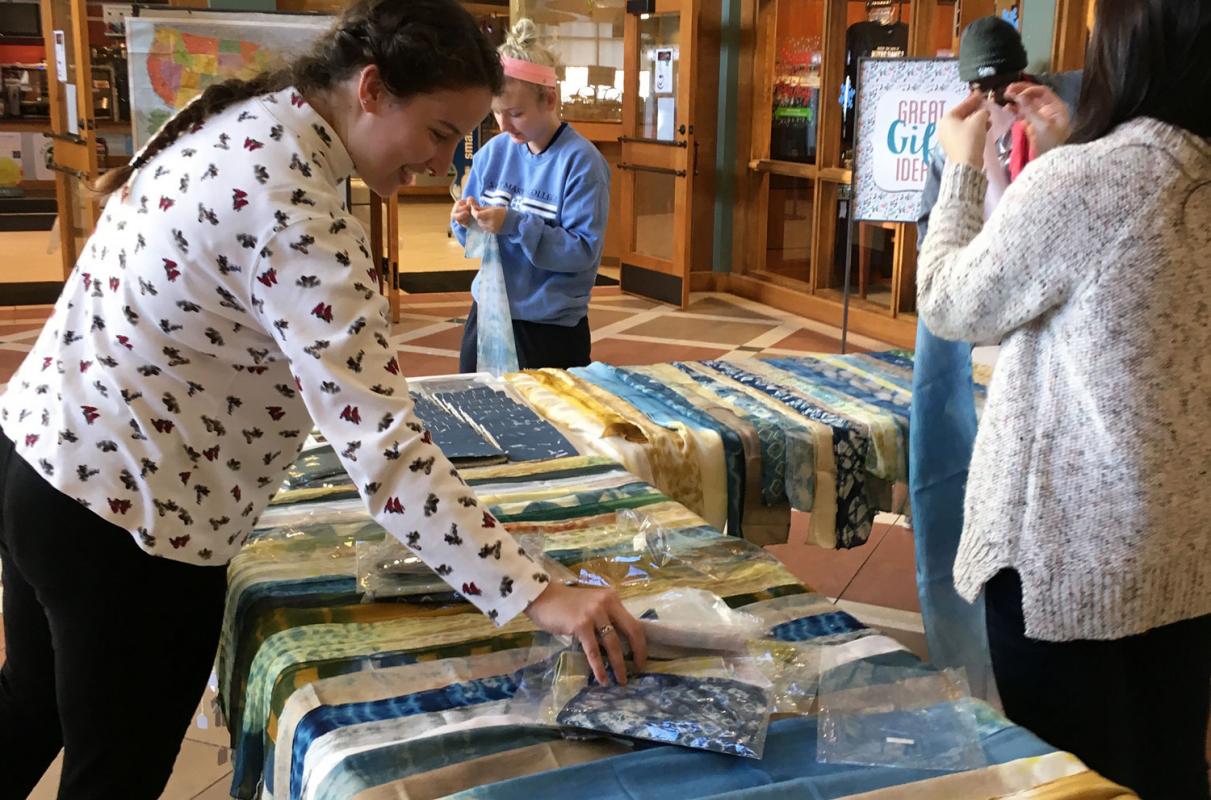
Students in Art 236 preparing for sale of handmade items to support the proposed Sustainable Farm Project at Saint Mary's College.
